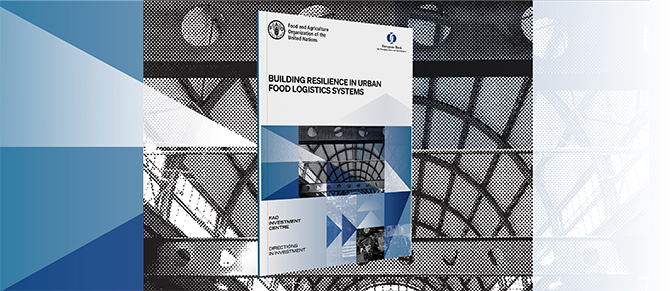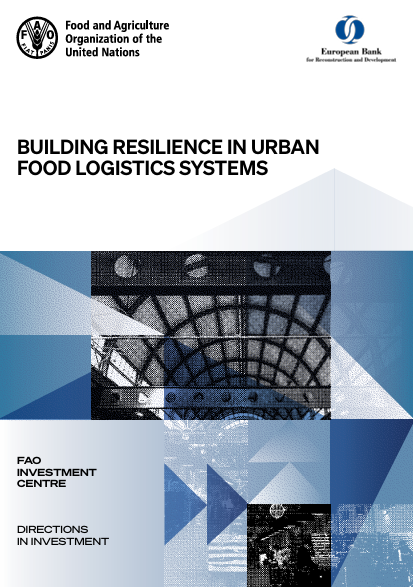Feeding our cities: How the COVID-19 pandemic reshaped the movement of food in urban areas

©FAO
The COVID-19 pandemic changed the way food is moved, sold and bought in urban areas worldwide – creating some new trends and accelerating others.
Supermarket chains and open-air markets began connecting even more with pick-up and delivery services. Farmers keen to move their perishable fresh fruits and vegetables started relying more heavily on digital technologies and platforms to sell directly to urban consumers.
Understanding how this new reality has reshaped the urban food distribution landscape is the subject of a joint report by the European Bank for Reconstruction and Development (EBRD) and FAO’s Investment Centre titled Building Resilience in Urban Food Logistics Systems.
It looks closely at the strategies urban authorities and the private sector used to strengthen rural-urban linkages and improve the resilience of food logistics infrastructure – from participatory food policy planning, legislation and regulations to an uptick in e-commerce.
The report combines insights from case studies in nine cities – Belgrade, Casablanca, Istanbul, Kyiv, London, Paris, Rome, Tashkent, and Tbilisi – as well as good practices from around the world.
Iride Ceccacci, Head of Corporate Sector Advisory from the EBRD, explained that this work is part of the partners’ joint COVID-19 technical assistance package launched in 2020 to help agrifood value chains in the EBRD’s countries of operation cope with pandemic-related disruptions.
“The pandemic and geopolitical tensions in recent years have revealed how vulnerable our global supply chains are to shocks and how that affects the availability and prices of food in cities,” she said. “These events are stark reminders of the need for policymakers, public and private investors, industry leaders and others to work together to make sure urban food logistics are not only more efficient but also more resilient and flexible.”
The bigger picture
FAO Agribusiness and Value Chain Specialist Florent Tomatis, one of the co-authors of the paper, noted that the report builds on a mix of data analysis and insights from a wide range of value chain stakeholders to give the bigger picture. The team interviewed more than 100 persons from retail shops, whether big chains or small family-run ones, wholesale and retail markets, urban authorities, e-commerce companies and logistics management.
“We wanted to understand how new and traditional players across agrifood value chains were adapting and innovating to stay afloat during this challenging period,” he said. “At the same time, we wanted to see how they were responding to the polarizing consumer demand, with some consumers seeking convenience or healthier, more locally produced foods, while others, the vast majority, looking for more affordable, budget-conscious options.”
Economist Berkin Sener, the other co-author, added that the pandemic highlighted both strengths and vulnerabilities within urban food logistics systems.
“While some cities were agile in adapting the urban spaces to increased home delivery operations and strengthened rural-urban linkages, others struggled to maintain food security amid logistical and economic challenges,” he said.
“Our analysis reveals that pandemic-induced trends, such as local sourcing, the growth of home delivery services and the transformation of urban logistics infrastructure have persisted and continue to reshape food systems, varying by each city’s unique circumstances.”
The trends and challenges highlighted in this report have broad implications for urban food distribution, urban environments and the relationships among food logistics actors.
They underscore the need for resilient and participatory food policy frameworks to ensure cities can weather future disruptions, meet diverse community demands and ensure everyone has access to nutritious food, at all times.

